Plant soil is essential to their life, providing them anchorage and nutrients. Without healthy soil, plants cannot grow, bloom, and defend themselves against harmful pests. However, someday you notice tiny little white things in your indoor plants’ plant soil or potting soil.
Read on and find out what are the little white things in plant soil and learn the 8 ways to get rid of pests.
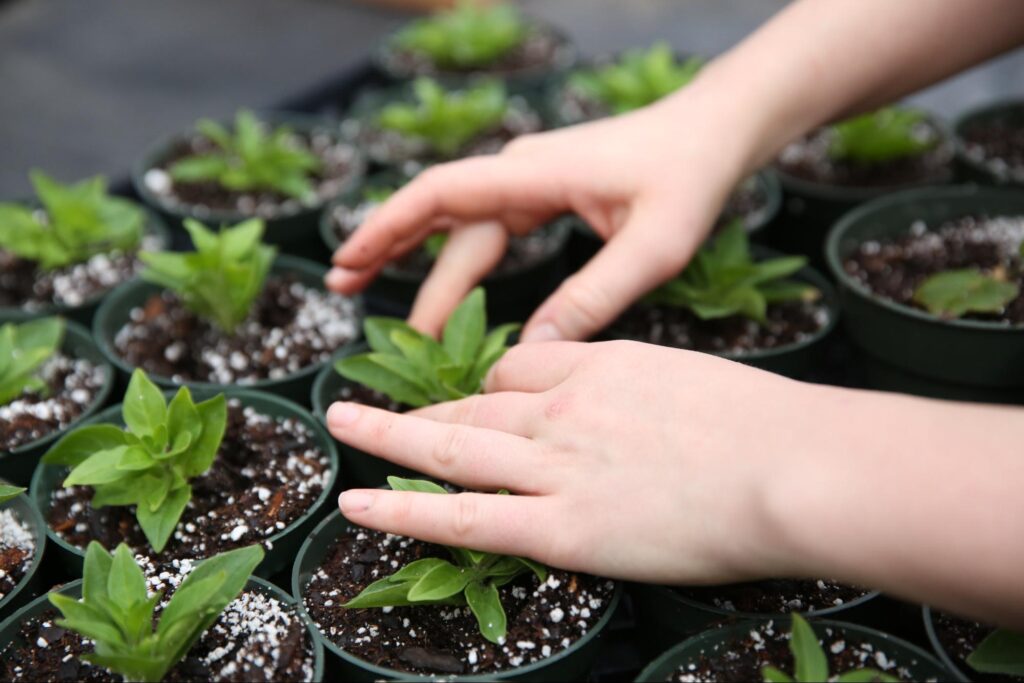
Potting plants—a healthy soil ensures healthy plants indoors and outdoors
The tiny little white things in plant soil can be perlite (material is added to potting soil mix for moisture retention and drainage), fungal mycelium (thread-like hyphal bodies), and other tiny white bugs in the soil can be soil mites, fungus gnat larvae, springtails, spider mites, whiteflies, grubs, and mealy bugs.
The soil infestation of these bugs is harmful to plants and their health. So, devising effective control measures at the right time can prevent harm to plants from other tiny white bugs and soil mites.
In this write-up, we’ll discuss little white things in plant soil and eight ways to get rid of pests in detail to provide information on protection.
What Are These Little White Things In Soil?
The soil of the potted plants provides a home to many microscopic organisms and insect larvae. It includes soil mites, root aphids, mealybugs, springtails, and grubs of many soil-dwelling beetles.
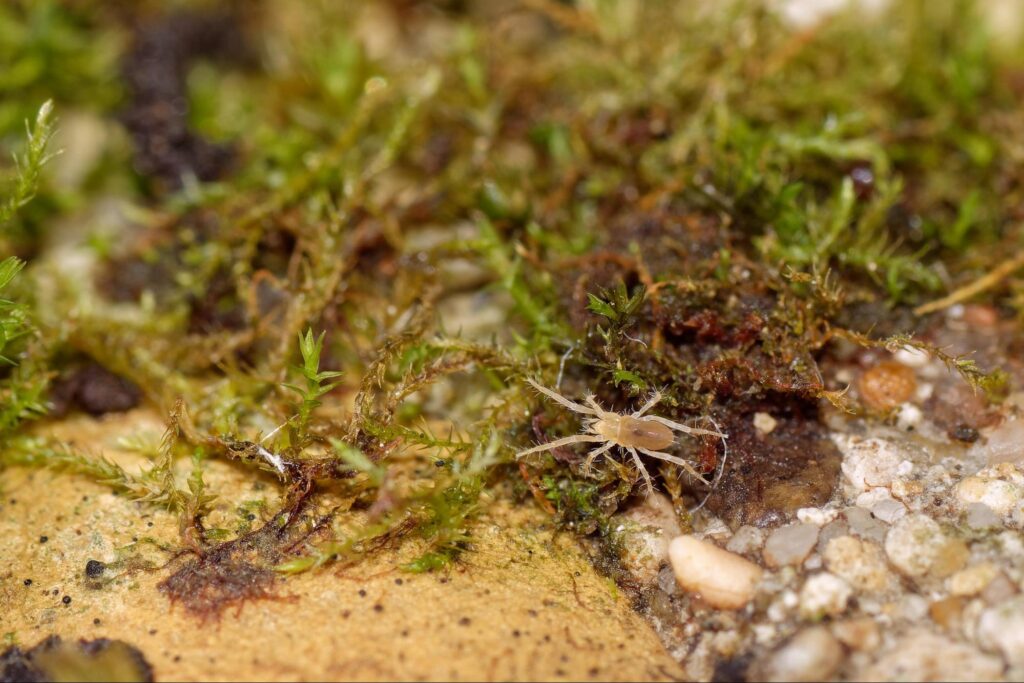
The soil mite near plants
These bugs in houseplant soil look harmful, but some are beneficial insects that help plant roots absorb nutrients.
One such helpful bug is soil mites.
Gardeners consider soil mites harmful, but they break down the organic matter present in the soil to release nutrients for plants. They also play a vital role in the compost’s health.
Soil Mites
Soil mites are the cousins of ticks and spiders and perform an essential task in soil, such as they feed on decaying leaf litter, fungus structures, algae, and naturally occurring substances in the ground.
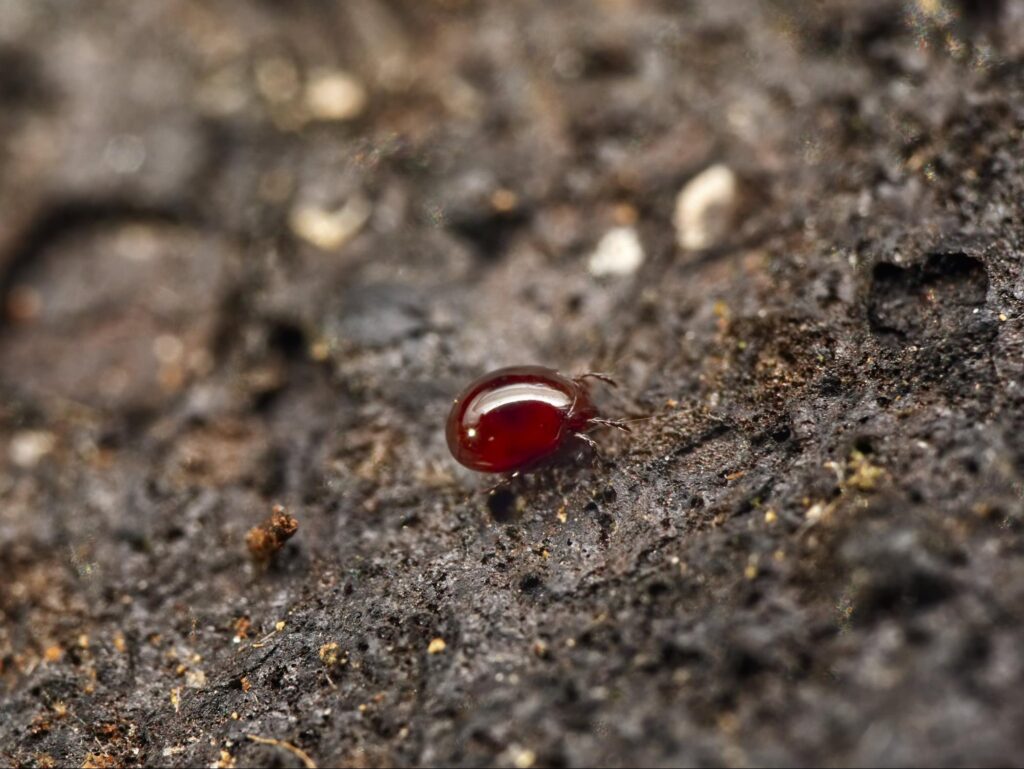
One of the most commonly found mites in the houseplant soil is—the Oribatid mite
These mites feed off rotten roots instead of healthy sources. They also preferably eat the pieces of stem bark and other dead soil pests. Soil mites can uniquely reside and reproduce in the potted plants’ moist, organically rich potting soil.
Three main types of soil mites inhabit the potting soil of your indoor plants: Oribatida, Mesostigmata, and Prostigmata. Among these mites, the most common are Oribatida. They prefer the houseplant soil and feed on chopped and rotten roots.
As these soil mites only after the organic matter of your potting soil. Therefore, their infestations will not harm plants, and they spread the spores of beneficial mycorrhizal fungi (these fungal organisms also convert the nutrients of organic matter into consumable form and improve soil fertility levels).
Note: In the case of dry and poor soil conditions, these soil mites bite or infest the roots of the plant. That’s why maintaining the soil and plant health is crucial and keeping an eye on their numbers in the compost pile.
Related: Russet Mites vs. Spider Mites: Their Differences and Management For Plant Good
Difference Between Soil Mites And Spider Mite Infestation
Soil mites are closely related to spider mites, similar to spiders and ticks, but they have different feeding preferences, behaviors, and habitats. Spider mites remain on the underside of leaves and use their piercing-sucking mouthparts to draw nutrients or sap.
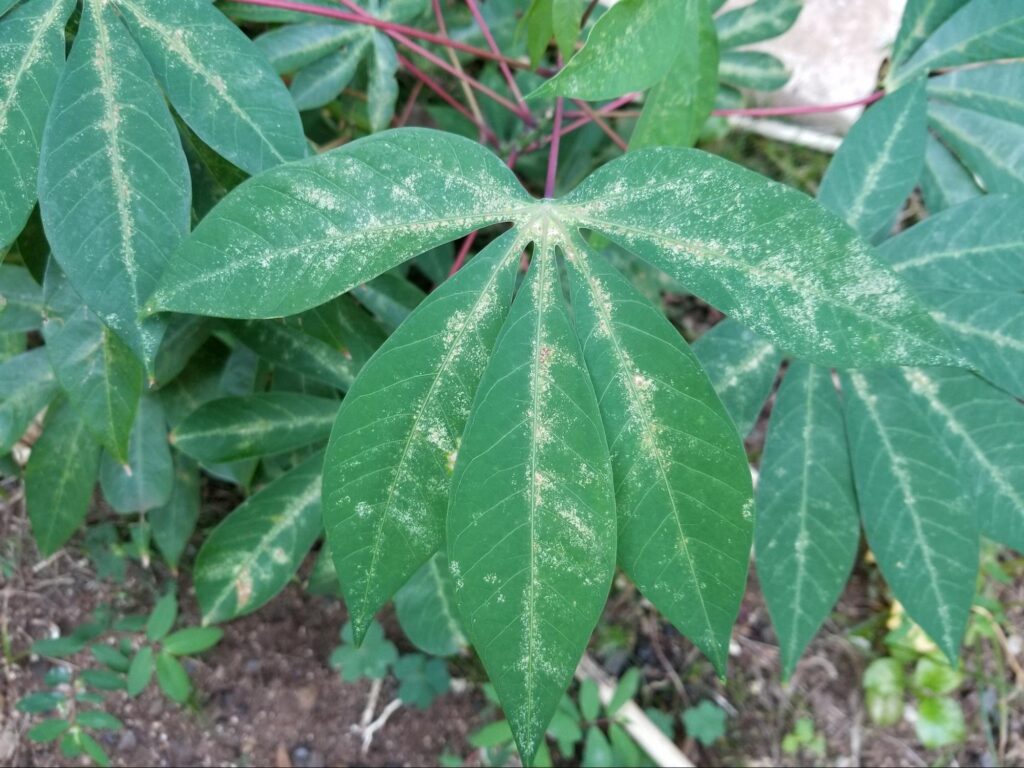
Spider mite infestation on cassava results in bleached and freckled foliage with no ability to photosynthesize
On the other hand, soil mites prefer soil as their home, where they feed on organic matter and hide from predators. In drier soil conditions, these mites start feeding on live plants. The infested soil of houseplants shows tiny white dots moving around the ground.
Spider mites infestations appear as fine webbing on the underside of infested houseplants.
Plants Susceptible to Soil Mites Infestations
All plants are susceptible to the infestations of soil mites that require moist soil. Succulents and cacti are less vulnerable to mites because they thrive in drier soil conditions and do not support the larger population infestations.
8 Ways To Getting Rid Of These Pests
Many ways to get rid of these pests in the soil, such as chemical pesticides and natural deterrents. However, preventive measures are crucial in keeping them away at the first step. The removal of decaying organic matter helps in the reduction of tiny white bugs in soil mites.
- Keep the immediate places of your houseplants neat and clean. Remove any fallen, damaged, and dead leaves to prevent the hiding of bugs.
- Cover the compost bin with a lid or plastic wrap to avoid the infestation of compost.
- Avoid overwatering the houseplants; otherwise, the standing water conditions will cause root rot and provide food to soil mites (Oribatids preferably feed on the rotting plant material).
- Repot the houseplants once or twice a year because it will change the soil of potted plants along with mites and other bugs.
- Always plant the indoor plants in pots with a good amount of drainage holes. These holes will drain out the excess water and prevent saturated soil conditions. Good drainage will also prevent outdoor potted plants and indoor soil toxicity.
- Keep the houseplants in the south or east-facing windows to provide them with good sun exposure. Good sunlight will dry out the leaf and soil surface after watering, thus discouraging the gnat flies and other white bugs in the soil.
- When repotting the indoor plants, thoroughly examine the roots of potted plants for root mealybugs, aphids, and soil mites. Cut off the brown and rotten roots (foul smelling) and apply fungicides to inhibit any fungal growth.
Adopt these practices along with preventive measures to maintain the excellent health of plants and soil.
Use Cinnamon To Repel Soil Mites
Cinnamon naturally acts as insect pest repellent and killer. Its regular applications as foliar spray or soil drench kill insect pests. To prepare a cinnamon foliar spray, mix one teaspoon of cinnamon per four cups of water. Pour the mixture into a spray bottle and apply it to indoor and outdoor plants.
Cinnamon kills soil mites by dissolving their body coverings and interfering with their neural activities. Or you can mix the cinnamon powder with soil, which will keep them away from the potting soil of your plants.
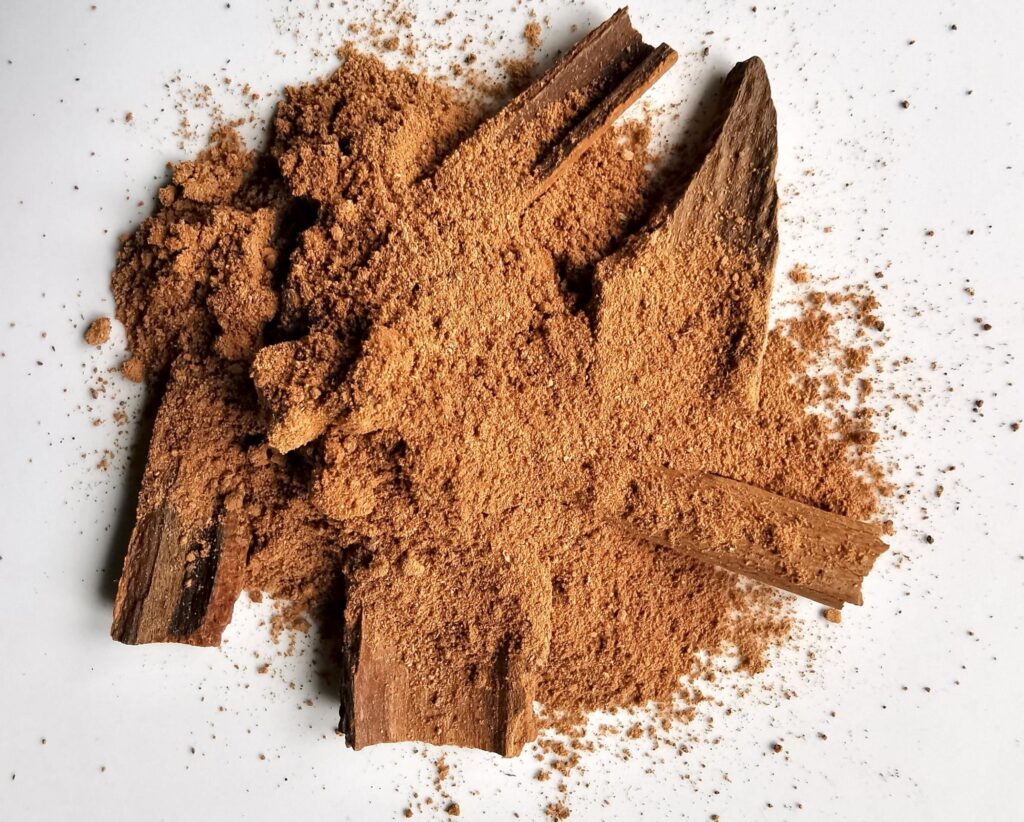
The cinnamon powder kills soil mites by dissolving their outer protective body coverings.
Related: What Insects Does Cinnamon Repel Plus How to Use it to Keep Them Away?
Apply Soap Water Spray To Get Rid Of Little White Things In Plant Soil
Dish soap also effectively kills the soil mite population in houseplants’ potting soil. Mix two teaspoons of dish soap per eight cups of water and apply directly on the soil surface near the plant base to deter the soil mites.
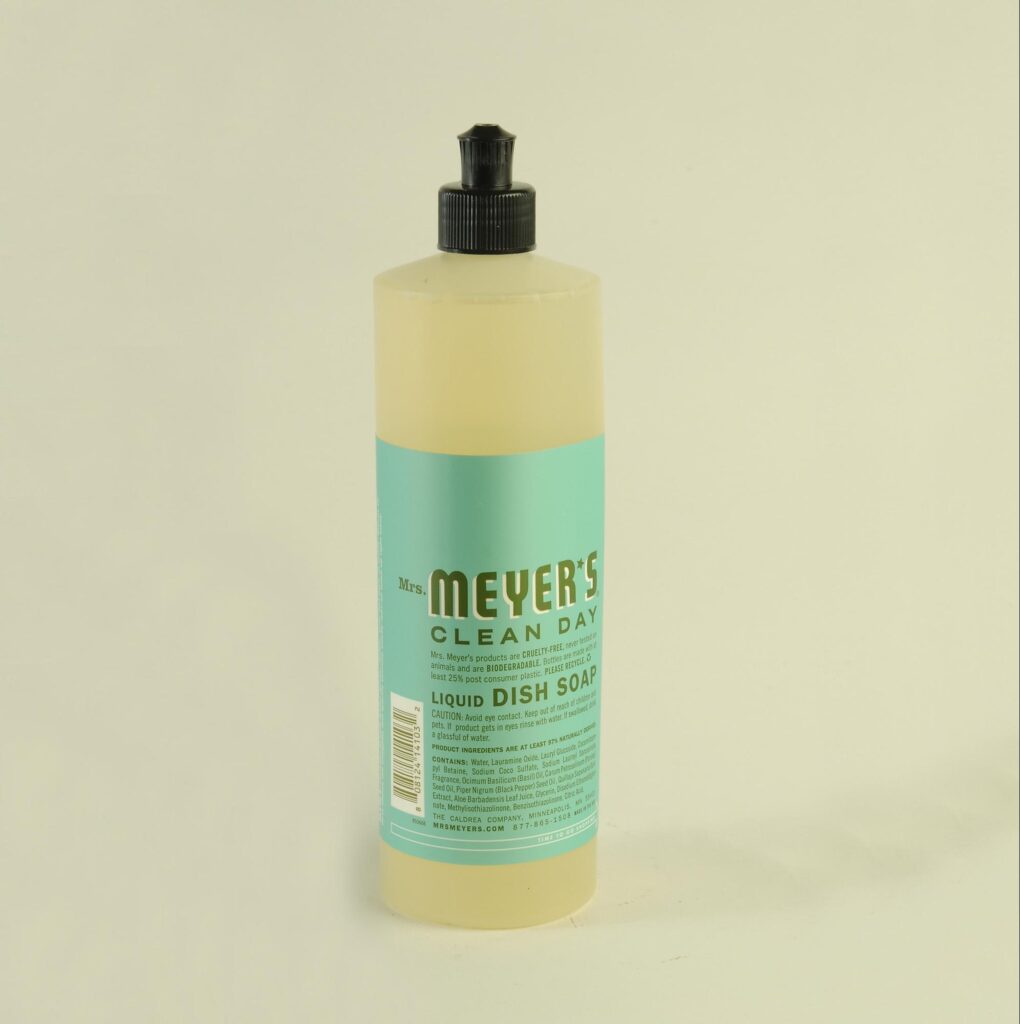
Dish soap also helps the plant owners get rid of soil mites
Use Hydrogen Peroxide Solution
Hydrogen peroxide solution repels and kills soil mites upon contact and keeps the plant healthy. Mix one part of the hydrogen peroxide and two parts of the water. Apply the solution to plants and soil to kill the eggs of insects and mites.
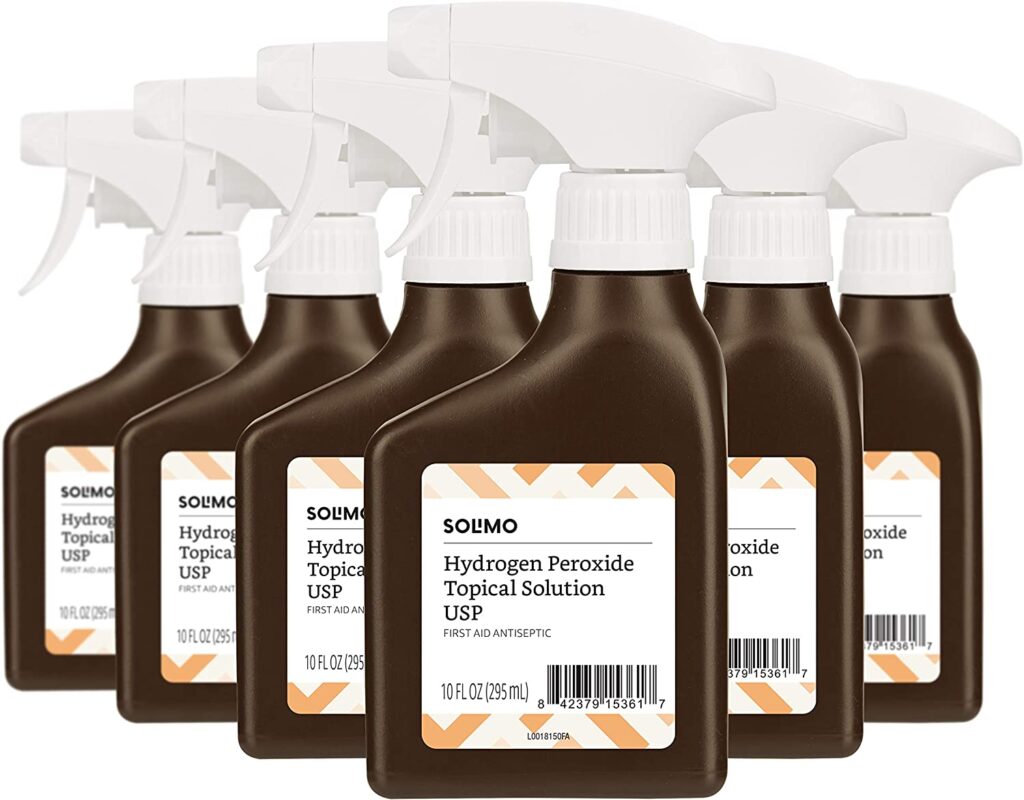
Hydrogen peroxide solution kills the soil mites and eggs of other pests
Use Neem Oil
Neem oil is a gardener’s best friend regarding insect pests, pathogens, and soil-dwelling grubs. It prevents the plant from their damaged by acting as
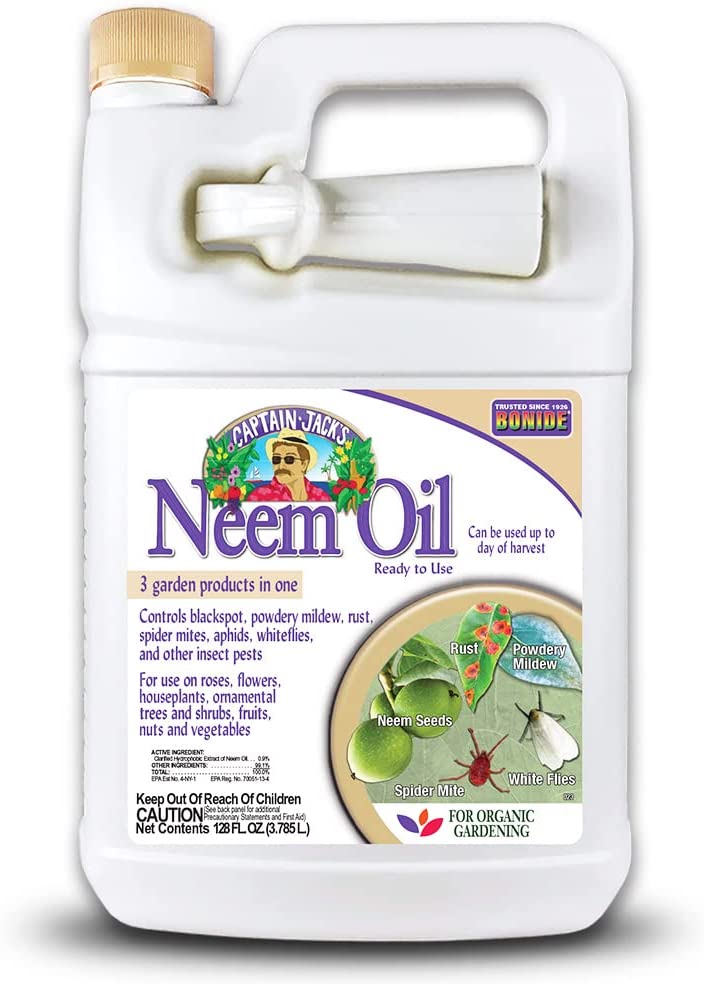
Neem oil kills the bugs on houseplants and from their potting soil
- Insect repellent
- Antifeedant
- Disrupting their regular growth and development
To prepare a neem oil solution for your plants, mix one teaspoon of neem oil per gallon of water with two teaspoons of dishwashing liquid to homogenize the mixture.
Pour the solution into a spray bottle and apply it as a foliar spray near the plant base to kill the soil mites, eggs, nymphs, and gnat fly larvae.
In early spring to mid-summer, apply the neem oil spray regularly, and once the plants stop blooming, reduce it to once a week or every two weeks.
Related: How to Use Neem Oil for Plants as an Organic Pesticide? Plus, Amazing Benefits!
Use Pesticides To Kill Soil Mites And Fungal Structures
Pyrethroids such as permethrin are used to control insect pests. These synthetic chemicals target the insect nervous system upon ingestion. They are quick in action and kill pests within 7 to 8 hours of application.
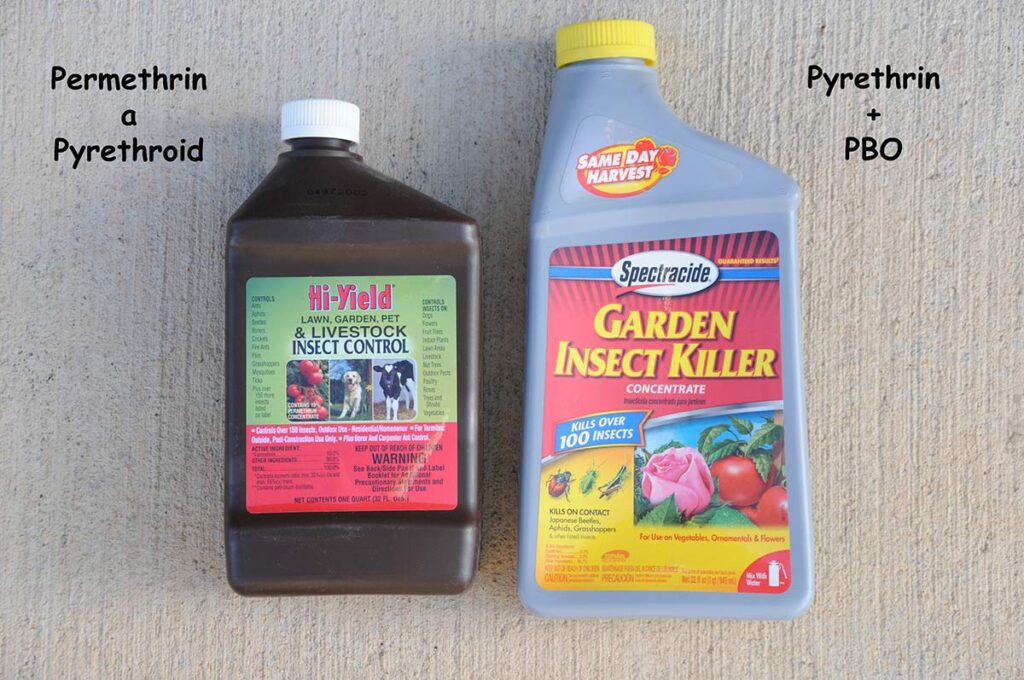
Pyrethroids kill insects not only on garden vegetables but also on commercial crops.
Use Garlic Spray
Take 2 to 3 garlic cloves and add to boiling water for 30 minutes. Allow the water to cool down at room temperature overnight. Pour the mixture into a spray bottle and apply it on the soil surface and near the plant base to kill soil mites.
Frequently Asked Questions
How Do I Get Rid of Little White Worms in my Soil?
The best way to get rid of little white worms in the soil of potted plants is by sprinkling the eggshells on the soil surface or around the base of the plant. The sharp edges of ground eggshells will pierce the bodies of beetle grubs and prevent foliage damage.
Also, spread diatomaceous earth to deter these soft-bodied pests.
What Kills Fungus Gnats Instantly?
One of the instant fungus killers is hydrogen peroxide. It kills the gnat flies, their eggs, larvae, and pupae. Apply the hydrogen peroxide solution as a soak and dry method. Prepare a hydrogen peroxide solution by mixing one part of 3 percent hydrogen peroxide per four parts of water.
Apply the solution as foliar spray or directly to the soil to destroy the eggs and newly hatched larvae. Be sure to check and remove the dead plants and properly discard them.
Should I Get Rid of Soil Mites?
There is no doubt that soil mites benefit soil and plant health and decompose the organic matter. They feed on dead leaves, rotten roots, and decaying plant matter. Once there is no food source for them in the soil, the soil mites attack the plant’s root system. Therefore, to get rid of them, repot your house plants every one or two years to provide them with fresh soil, free of white bugs.
How Do I Get Rid of White Mites Naturally?
- Remove the garden plant debris and clutter.
- Prune off the weak, brown, and damaged foliage of affected plants in spring (ensure the new growths are starting).
- Spray plants with insecticidal soap and fungicide solutions to kill the dormant insects, eggs, and microbial spores.
- Throughout the growing season, apply homemade organic solutions, such as garlic spray and chili spray, and need oil to kill the pests.
- Thoroughly water the outdoor potted plants up to once inches of the soil layer, but avoid overwatering, as it will attract more pests.
How Do You Get Rid of White Eggs in Soil?
Hydrogen peroxide kills the gnat fly eggs when applied to the soil surface. Its regular applications can destroy the eggs, thus eliminating the problem of larvae and root damage.
How Does Hydrogen Peroxide Get Rid of Gnats?
Hydrogen peroxide kills the larvae of gnat flies upon contact. It releases the hydroxyl free radicals that damage the insect body’s cell membranes, lipids, and proteins, thus causing their death.
Is Coffee Good for Plants?
Coffee grounds are great for plants because they act as plant fertilizers. They add nitrogen, potassium, and phosphorus. Sprinkle the coffee grounds around the plant base or mix it with soil to improve soil nutrition and plant health.
The coffee grounds will benefit from acidic soil-loving plants like blueberries and azaleas. On the other hand, tomato plants will not do well in acidic soils.
How Fast Do Mealybugs Spread?
Mealybugs spread rapidly because the female lays up to 300 to 600 eggs per cycle that hatch within 3 to 4 days of laying. The nymphs infest the underside of leaves and are sessile once they find suitable feeding sites.
How Do I Get Rid Of Mealybugs In Soil?
The following are the best treatments for mealybugs in soil;
- Mix one cup of isopropyl alcohol per few drops of liquid dishwashing soap and one quart of water.
- Pour the mixture into a spray bottle and thoroughly wet the plant (apply to the entire plant, not only leaf surfaces where you spot the mealybugs).
- Apply to the soil surface once a week or at three days intervals.
Another best approach is to introduce the natural enemies of mealybugs, such as shore flies, green lacewings, lady beetles, and parasitic wasps. The parasitic wasps effectively control mealybugs as they lay eggs inside the body of adult and young mealybugs.
Upon hatching, the larvae feed on the body fluids of the pest, thus disrupting their natural growth regulating hormones. Once their host can not serve the larvae more food, they leave the carcass and munch on aphids and whiteflies.
What Home Remedy Kills Gnats In Houseplants?
The best home remedy against fungus gnats is a white vinegar trap. Mix one cup of white vinegar, two tablespoons of sugar, and a half cup of water in a bowl. Place the bowl near your houseplants. The white vinegar will attract the bugs, and once they are in the bowl, they won’t be able to leave it.
Sources For Further Reading
- Containers and Potting Soil for Indoor Seed Starting. (2022, August 11). University of Maryland Extension. Retrieved August 13, 2022, from https://extension.umd.edu/resource/containers-and-potting-soil-indoor-seed-starting
- Potting and Repotting Indoor Plants. (2022, July 22). University of Maryland Extension. Retrieved August 13, 2022, from https://extension.umd.edu/resource/potting-and-repotting-indoor-plants
- Kelley, K., PhD. (2022, August 14). Preventing, Diagnosing, and Correcting Common Houseplant Problems. Penn State Extension. Retrieved August 12, 2022, from https://extension.psu.edu/preventing-diagnosing-and-correcting-common-houseplant-problems
- Hahn, J. (2020c). Managing insects on indoor plants. UMN Extension. Retrieved August 13, 2022, from https://extension.umn.edu/product-and-houseplant-pests/insects-indoor-plants
Editor’s Recommendations
How to Get Rid of Wireworms Effectively?
Fungus Gnats vs. Fruit Flies: How to Get Rid of Them on Houseplants?
Common Types of Houseplant Bugs: Who They are & How to Get Rid of Them?







